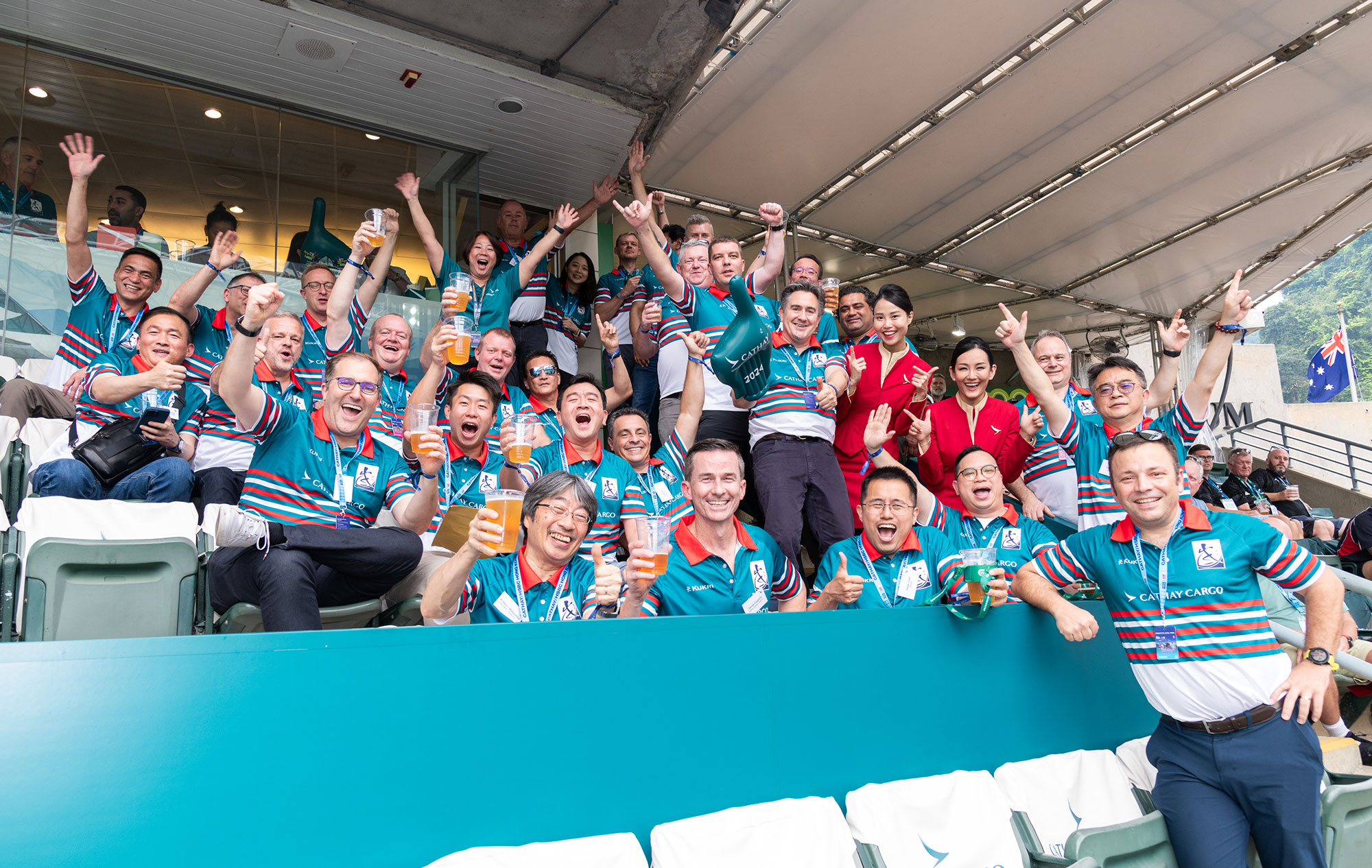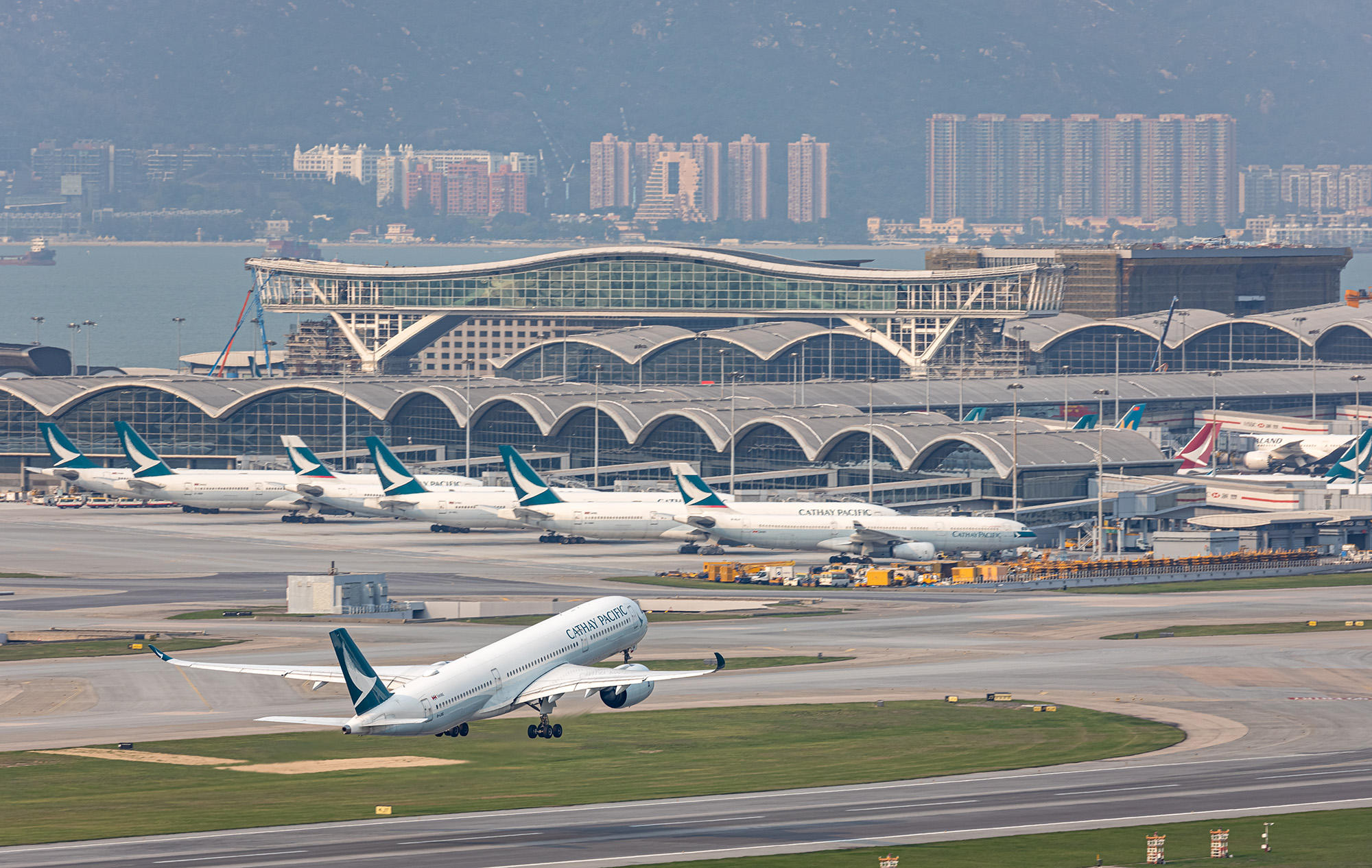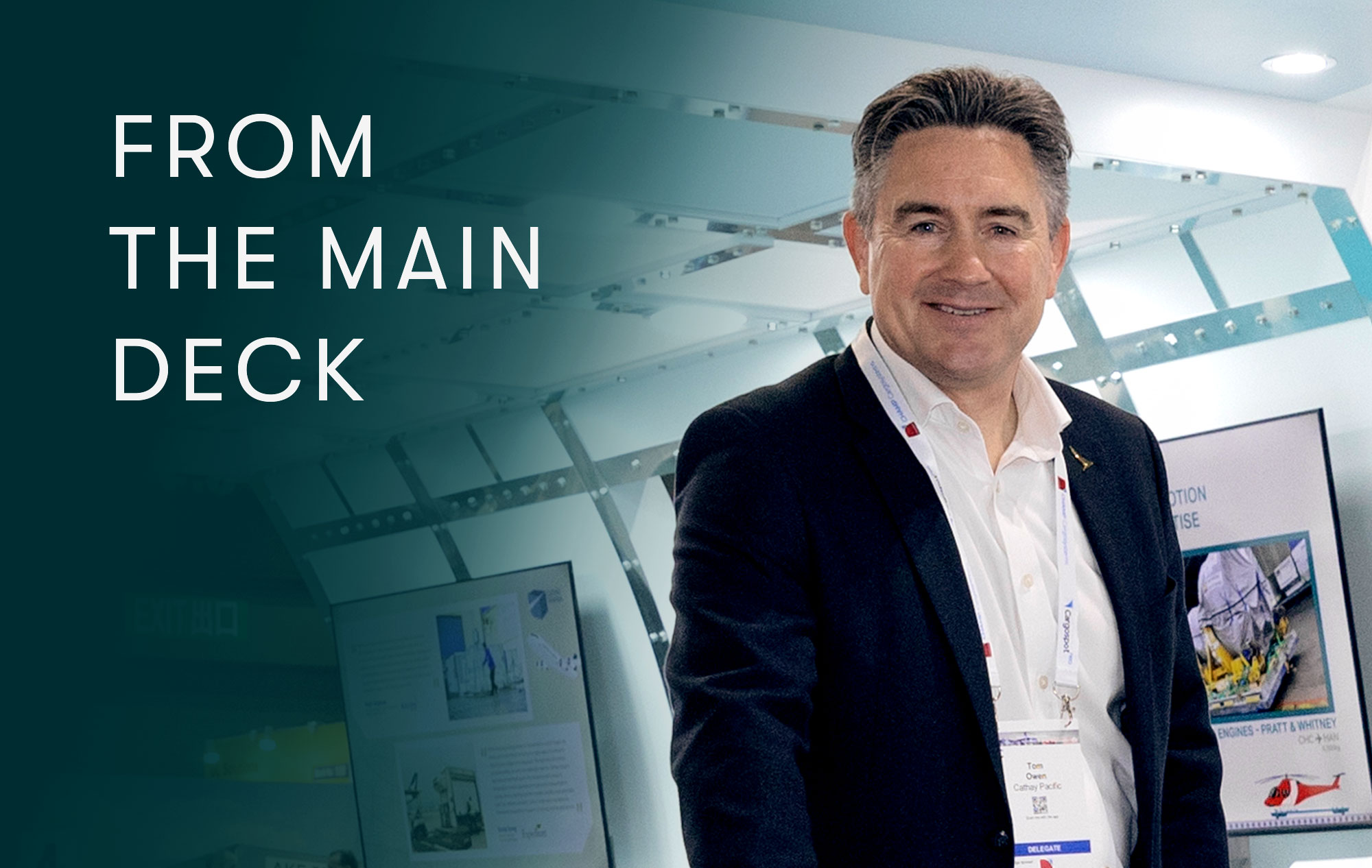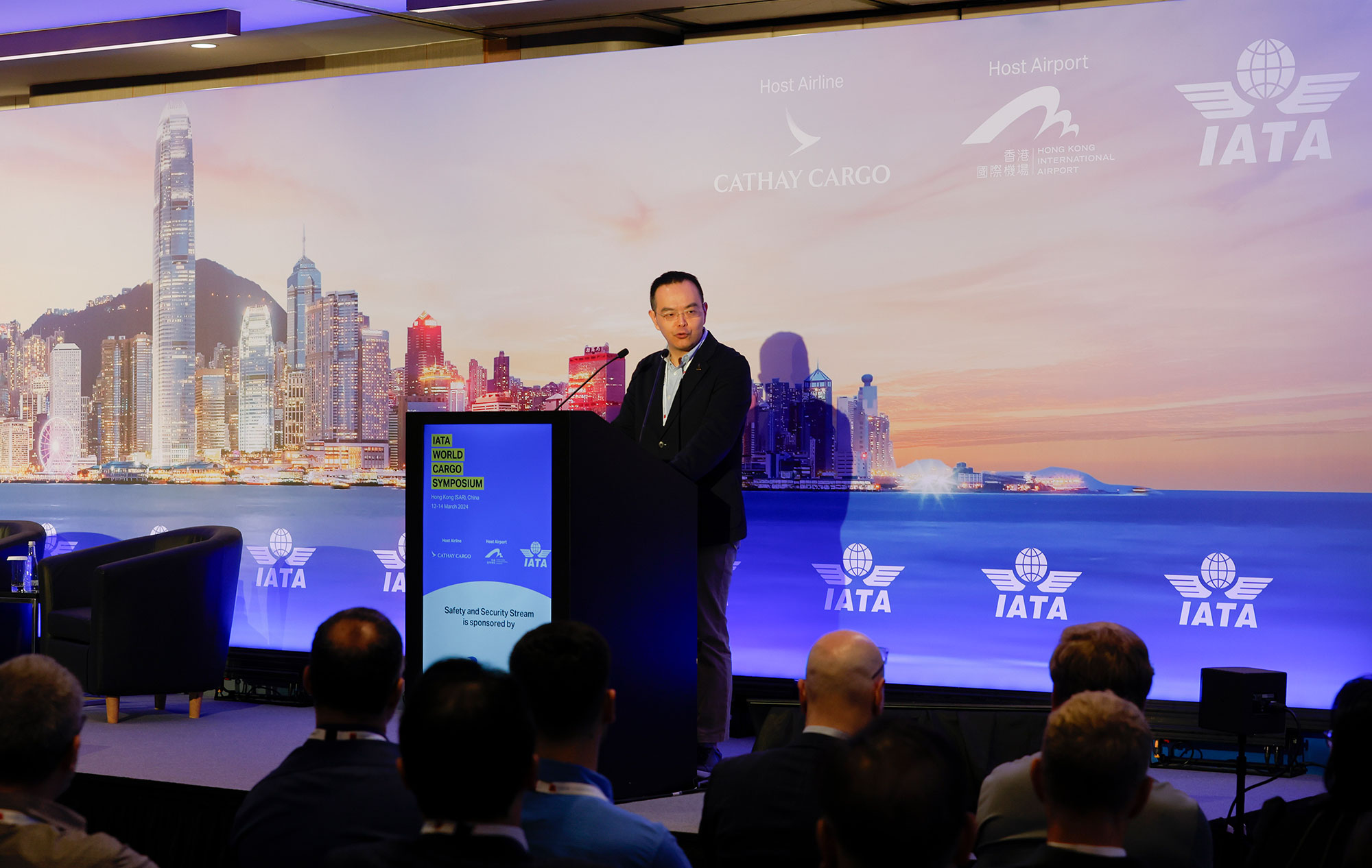Miami: the southernmost point of the US to be served by Cathay Pacific. It’s a freighter-only port for the airline, but a vital one – not without reason is Miami (MIA) known as ‘The Gateway to the Americas’. Cathay Cargo Area Manager Florida and Latin America Camilo Gallo knows this intimately: he coordinates and channels cargo from Central and South America via MIA but also via any Cathay Cargo online port– for its journey to Hong Kong and beyond.
In Miami, Gallo leads a team of seven he calls the ‘Cathay pure bloods’ because they work exclusively for Cathay, liaising with third-party general sales agents across the offline regions – those ports where Cathay does not fly directly. ‘These agents are our extended arm, reaching our customers in the regions where we don’t operate allowing us to be as customer-centric as possible,’ he explains.
Key to this is a network of regional interline airline partners that also reach the parts that Cathay does not get to with its own metal. These include Avianca, LATAM, Amerijet, DHL Aviation and more. Their networks are why Gallo and his team can feed Cathay ports beyond Miami – as many as 11 Cathay ports across the pre-pandemic network, across the Americas and also across the Atlantic in London and Rome, and even in one instance from Brazil to Johannesburg, which rejoins the Cathay network this summer.
Keeping cargo moving in the pandemic
That extensive interline network is also why, during the most challenging periods of the pandemic, Gallo was able to keep air cargo moving using the innovation that is central to the team’s success. ‘In 2020, we were effectively a network carrier that had lost its network,’ he says. ‘We had to reinvent ourselves, but that’s something you have to do all the time when you’re offline. We need to be creative because we don’t have our own flights. We have to work with different partners, use different routes and different points of connection.’
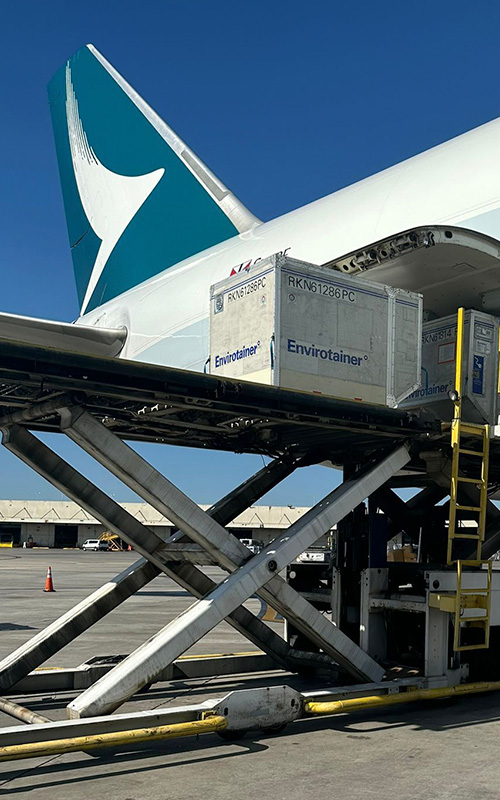
A good example of this is the pharmaceutical industry in Puerto Rico. The territory is responsible for the most cooltainer movements on the entire Cathay network, yet it’s an offline port. Ordinarily Amerijet, which like Cathay Cargo holds CEIV Pharma accreditation, would fly pharma shipments to Miami to meet a Cathay Cargo freighter, but the restrictions on flight crew in Hong Kong at the start of 2022 meant no freighters from Miami. ‘We had to sit down with our interline partners and design a solution for our customer,’ says Gallo.
In this instance, that involved Amerijet flying shipments to Newark, from where they were trucked to meet a Cathay Cargo freighter in Chicago, one of the few US ports operating during the restriction period. It took longer, but it’s testimony to the shipper’s trust in Cathay Pharma that they wanted to retain Cathay Cargo for the transpacific leg, handling in Hong Kong and onward flights to Asia.
Another innovation that proved popular with customers across South and Latin America in 2022 was the ‘first leg charter’, working this time with Avianca. ‘We did 11 charters with Avianca from Santiago to Miami using an A330 freighter,’ says Gallo. The cargo was then uploaded to Cathay freighters. This is unusual as charters are generally point-to-point, but this hybrid model offered customers an exclusive first leg charter of 64 tonnes for distribution from Hong Kong to other parts of the Cathay network. ‘It gives customers flexibility and a better ability to fill that first leg,’ he adds. ‘We’re proud of this initiative and we’re going to be repeating that same strategy this year as well.’
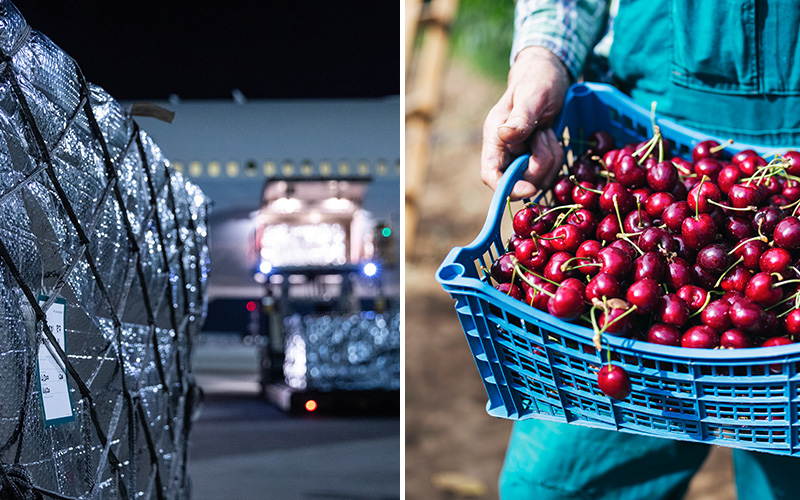
From Miami to China
Miami is still a very significant port in its own right. Produce makes an important contribution: during the winter peak MIA received eight freighters a week (up from a regular six a week), to handle the cherry season from Chile. Meanwhile Chilean salmon is a year-round stalwart, with the Chinese Mainland the principal destination.
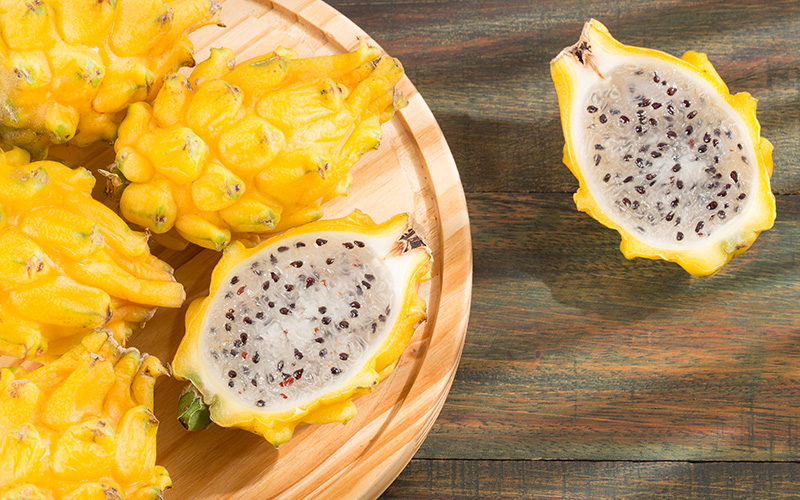
Take also dragon fruits from Ecuador. The yellow skinned variety are the beneficiary of a free trade agreement signed by the Ecuadorian and Chinese governments; there is the hope that the in-demand fruit will soon be given access to enter the market directly.

Gallo has plans for the Chinese Mainland market. ‘Everything goes to Shanghai, but many of those receivers are then trucking their shipments to other cities within the Chinese Mainland,’ he says. ‘We’re now going back to that pre-Covid mentality and saying, “hey, remember that we’re the experts and we have many flights across the country. We can provide a solution out of Hong Kong that will reduce transit times for your perishables.”’
It’s not just produce, of course. Gallo also highlights the superconductor/chip business in Costa Rica, with sophisticated chips making the three-hour trip to Miami for distribution across north-east Asia.
Accelerating progress and presence
The year has started strongly with Gallo’s team recording 400-500-tonne weeks, which he says ‘is not usually the case for February’ and following on from the cherry-led peak. It’s a mark of the real progress over quite a short timeframe.
‘This time seven years ago, we were starting to work on all this development, making the appointments with GSAs, but now we’re really the big kids on the block,’ says Gallo. ‘Customers now know who we are, understand our solutions and how we do business. We’ve got a very good reputation in the market even though we’re largely offline. That’s just an amazing achievement.’
Looking ahead to this year and beyond, Gallo identifies two drivers for continuing growth. ‘Number one is getting our network back,’ he says. ‘As we start to increase our capacity, we will have more opportunities to capture more of the market in South and Central America and across the Caribbean. At the same time, we’re working with our Partnerships team in Hong Kong to increase the support with interlines, which gives us the tools that we need to increase our market presence.’
And presence in the market is also to the fore in terms of maintaining relationships. ‘We had two years where we were not travelling,’ says Gallo. ‘Now that things are coming back and even though we’ve got used to meeting digitally, we’ve also seen the excitement of meeting in person again. I would like to formally apologise to my wife, but I can see myself being on the road 50 per cent of the time this year.’
But today, he’s in the good books. As we speak he is rounding up sleeping bags and his son for a night under the stars – and a rocket – at the Kennedy Space Center; aviation front-of-mind, even in his downtime.





